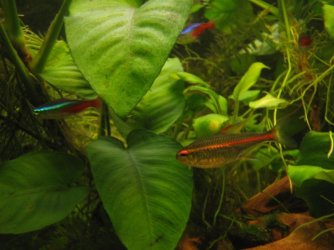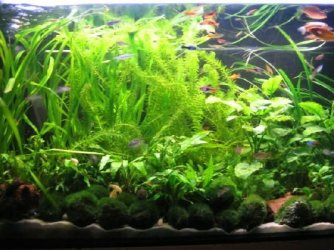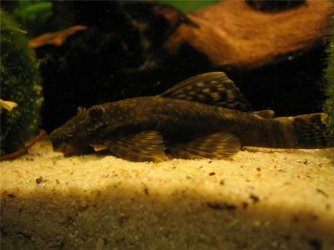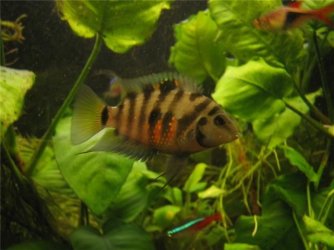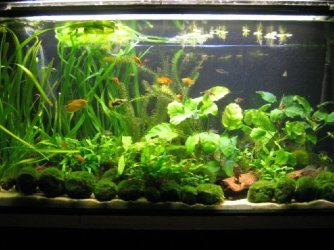"Aggression" has many facets. Male cichlids are all aggressive, but this plays out differently among species, and sometimes among individuals in a species. It often does not involve physical attacks. But to your initial question, the Bolivian Ram (
Mikrogeophagus altispinosus):
Compatibility/Temperament: Peaceful, an excellent cichlid for a community tank of characins, smaller catfish species, rasbora, small loaches, gourami; will co-exist with angels and discus. Fish will sometimes display aggression toward members of their own species including simple chasing, ramming, and lip-locks; while usually non-harmful, targeted fish may be weakened to the point of death. This can apply to mates especially if they did not bond on their own. Best kept as a single fish, or in a bonded pair.
This species was first imported by Horst Linke and Wolfgang Staeck in 1985, and their reported habitat observations suggest that this species appears to live in solitude (individual fish alone) apart from reproduction periods (Linke & Staeck, 1994). Single fish are therefore good cichlids for a community aquarium. More than one can be housed if the tank provides sufficient floor space for individual territories, and they are introduced at the same time--but peace may not last regardless. The fish remains in the lower third of the water column, spending most of its time browsing the substrate for bits of food.
Given the tank size here, I would go with a solitary male. As noted above, it feeds from the substrate, and it will if annoyed push Corydoras away from "his" food, as they eat the same things (bug bites, shrimp pellets, frozen shrimp and daphnia). A male will own the tank sapce, without doubt, and all the other fish will know it. But nothing usually proceeds from this, provided the fish are suited to the environment in all respects.
You also want dither fish, for both the ram and the cories. Cories on their own no matter the group size will still feel threatened without fish above them, and this applies to the ram as well. Fish that remain in the upper half obviously, since the ram and cories are lower half. Your hard water makes this a bit difficult, but it is still in my view a necessity.
A comment on water changes...one a week if it is substantial is sufficient, or should be. Live plants, especially floating species, are mandatory for all these fish as none of them like bright overhead light, they feel too vulnerable. There is an article I wrote at the head of the Tropical Discussion forum.
Byron Hosking November, 2010 (rev April 2021) Nothing is more important when it comes to aquarium maintenance than regular partial water changes. The adage “an ounce of prevention is worth a pound of cure” certainly applies here. One frequently reads of products that will reduce the need for...

www.fishforums.net




